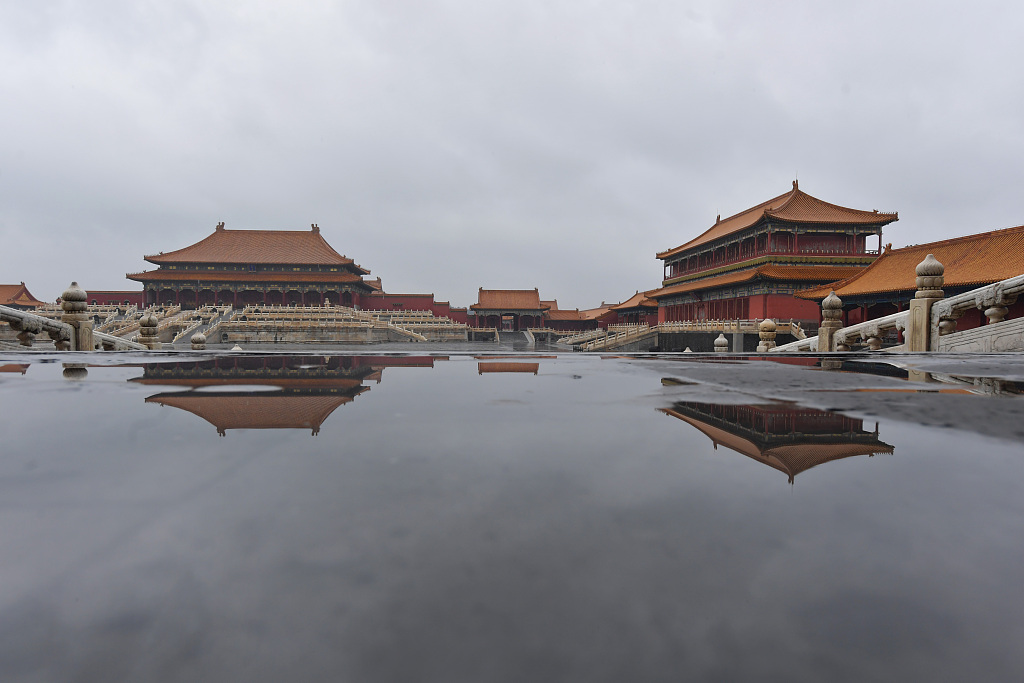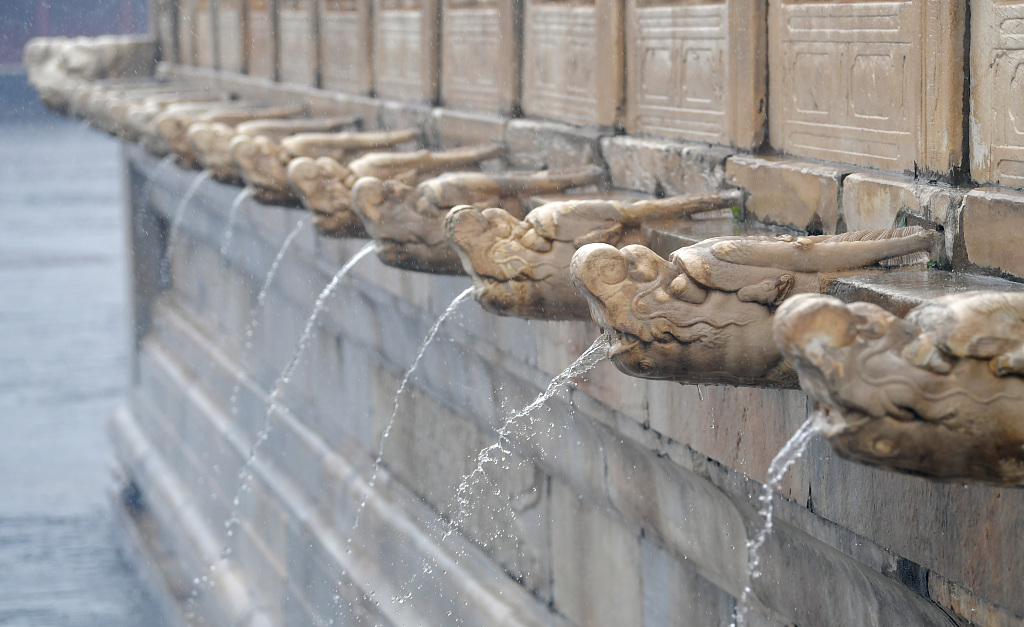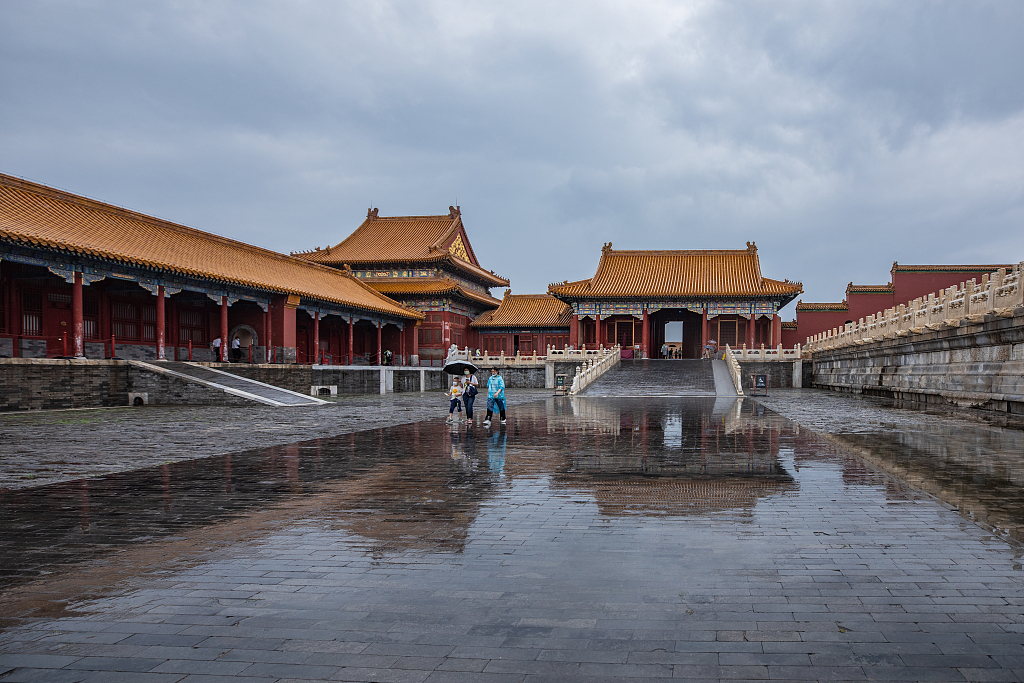The Forbidden City, also known as the Palace Museum, lies in the center of Beijing and served as the imperial palace of the Ming (1368-1644) and Qing (1644-1911) dynasties for more than 500 years.

Photo taken on July 31, 2023 shows ponding at the Palace Museum after a heavy rainstorm hit Beijing. /CFP
Photo taken on July 31, 2023 shows ponding at the Palace Museum after a heavy rainstorm hit Beijing. /CFP
As the largest palace in the world, the complex was built with an advanced drainage system to ensure that rainfall could be discharged into rivers immediately, and this ancient project is still in use today.

Photo taken on July 31, 2023 shows the dragon heads surrounding a high marble platform at the Palace Museum spouting water during heavy rains. The dragon heads serve as outlets to discharge ponding on the platform. /CFP
Photo taken on July 31, 2023 shows the dragon heads surrounding a high marble platform at the Palace Museum spouting water during heavy rains. The dragon heads serve as outlets to discharge ponding on the platform. /CFP
The drainage system consists of subdrains and open trenches, which all lead to the 52-meter-wide moat outside the palace. It can bear up to 20-millimeter precipitation per hour, according to Palace Museum staff. Thus, over two days of rainstorms in Beijing at the end of July which saw more than 200-millimeter precipitation in total, the water was discharged smoothly, in spite of temporary ponding for just a few hours.

Tourists stroll at the Palace Museum amid rainy weather on July 27, 2023. /CFP
Tourists stroll at the Palace Museum amid rainy weather on July 27, 2023. /CFP
During imperial times, the subdrains would be opened and cleared each March. Presently, the staff clean the subdrains three times a years to ensure the drainage is not blocked.